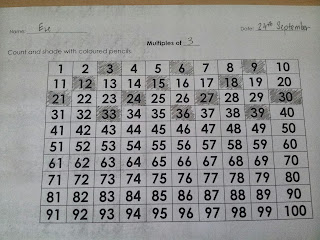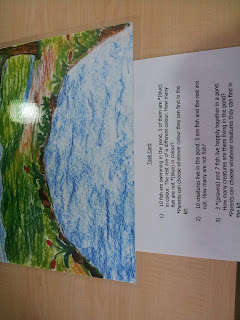Children
should be given lots of opportunities to experience and explore. Children learn through concrete materials and
learn best through their senses. They learn things based on previous
experiences and these experiences will be organize and re-organize in their
mind. Human interaction is needed to mediate children’s learning and help them
to a higher level of development.
However,
psychological environment must work hand in hand with physical environment.
Teachers must set up a well-arranged environment to make connection between
classroom settings and children’s behaviour, between physical arrangements and
intellectual learning.
Teaching mathematical
concepts to children is probably as much about the ways we assist them in
building the connection between the objects and mathematical concepts as well
as foster communication. Often, the
teaching of mathematical concepts is best accompanied by appropriate
manipulatives. Manipulation is essential for children to acquire physical
knowledge and logicomathematical knowledge.
After introducing the
manipulatives, teachers need to describe the calculations or the
problem-solving strategies in clear, concrete terms that young children can
understand. Use appropriate language could help children to understand the
concept and explain their thinking processes as they work on different types of
mathematical problems.
Most
importantly, mathematical concepts and skills that are introduced to the
children need to be done in a hierarchical order – always moving from the
simple to the complex and from the concrete to the abstract. Challenges set for
the children should be set according to their readiness.
Teachers
can do this by introducing new activities and experiences related to one
specific concept for the children so that they enhance their previous knowledge
and experiences. Teacher should also allow children to revisit certain
activities from time to time as a form of ‘revision’ and ensure that concepts
are understood and applications are made with confidence and competence.









